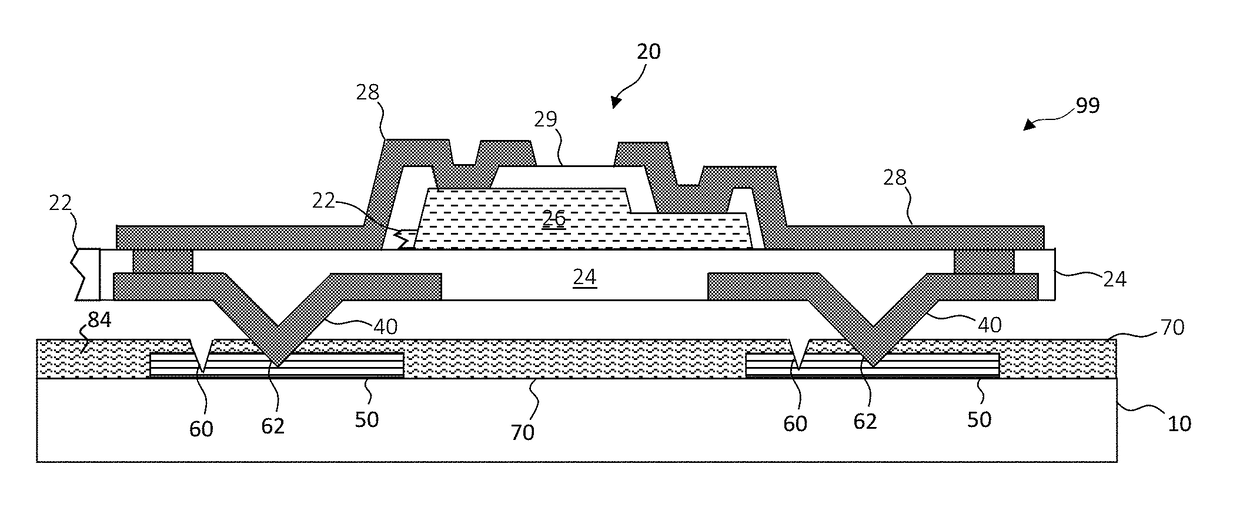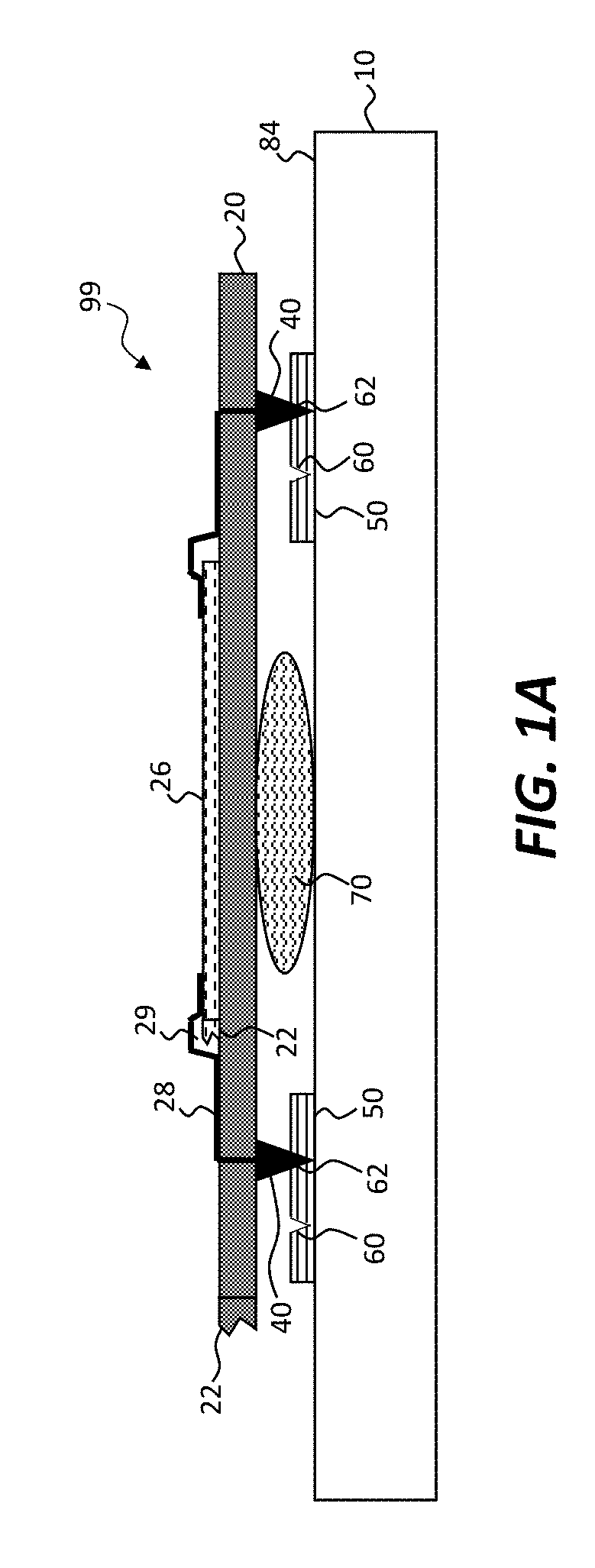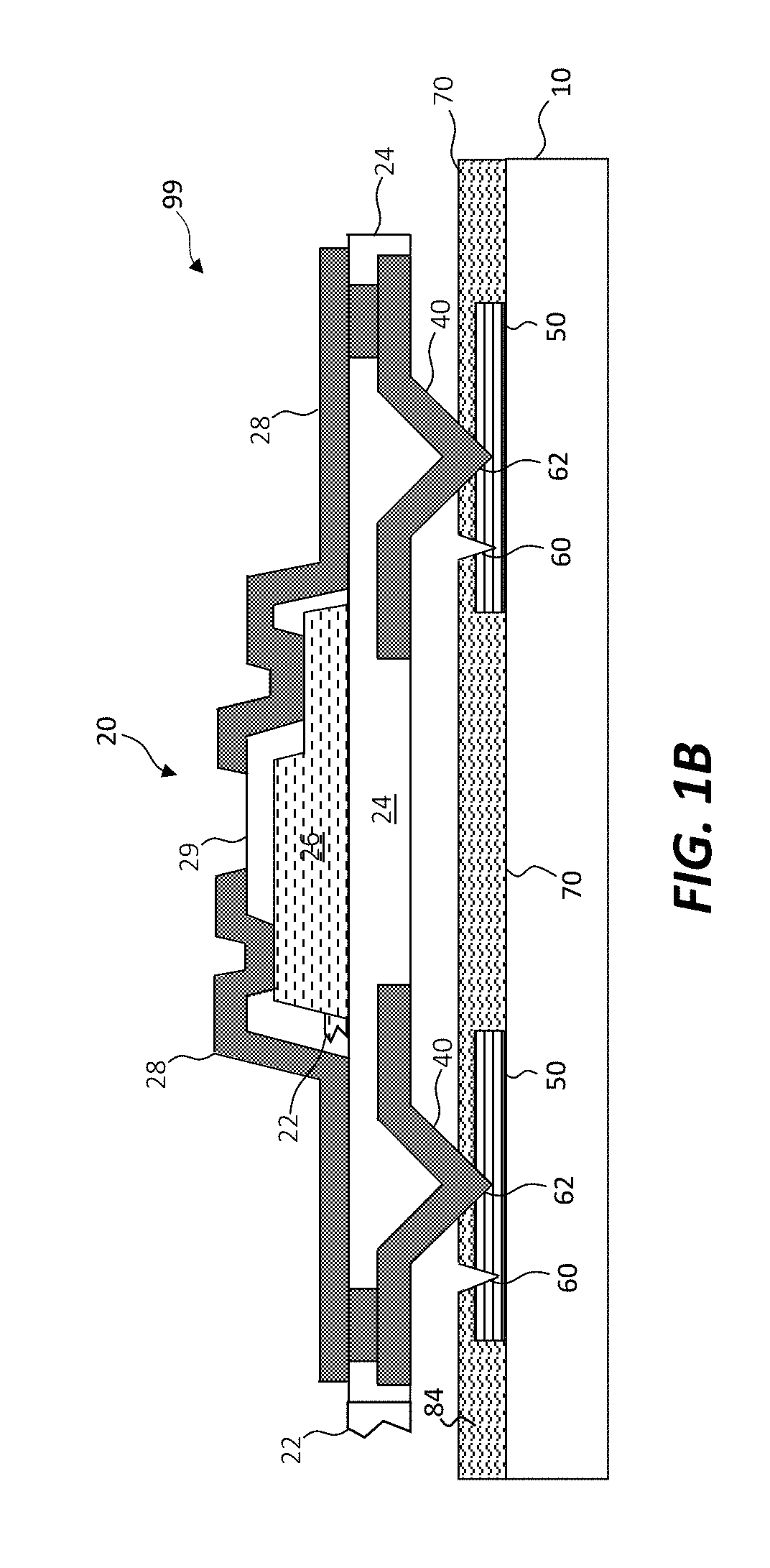Transfer printed device repair
a printed device and transfer technology, applied in the field of transfer printed device repair, can solve the problems of waste of materials, low performance of other integrated circuits, and performance limitations of the technique, and achieve the effect of simple and robust electrical interconnections and high resolution
- Summary
- Abstract
- Description
- Claims
- Application Information
AI Technical Summary
Benefits of technology
Problems solved by technology
Method used
Image
Examples
Embodiment Construction
[0055]The present invention provides, inter alia, structures and methods that enable large, high-yield, cost-effective, and electrically connected arrays of relatively small integrated circuit chiplets or assemblies at a high resolution on a relatively large destination substrate despite materials and manufacturing process variability and contamination.
[0056]Referring to FIGS. 1A and 1B, in some embodiments of the present invention, a repaired transfer-printed system 99 includes a system substrate 10. Two or more contact pads 50 are disposed on the system substrate 10 and one or more micro-transfer printed devices 20 are disposed in contact with the contact pads 50 or system substrate 10. Each device 20 has two or more connection posts 40. Each connection post 40 is in physical and electrical contact with a contact pad 50 and forms a second imprint 62 in the physically contacted contact pad 50, for example by piercing or deforming the physically contacted contact pad 50.
[0057]At lea...
PUM
 Login to View More
Login to View More Abstract
Description
Claims
Application Information
 Login to View More
Login to View More - Generate Ideas
- Intellectual Property
- Life Sciences
- Materials
- Tech Scout
- Unparalleled Data Quality
- Higher Quality Content
- 60% Fewer Hallucinations
Browse by: Latest US Patents, China's latest patents, Technical Efficacy Thesaurus, Application Domain, Technology Topic, Popular Technical Reports.
© 2025 PatSnap. All rights reserved.Legal|Privacy policy|Modern Slavery Act Transparency Statement|Sitemap|About US| Contact US: help@patsnap.com



